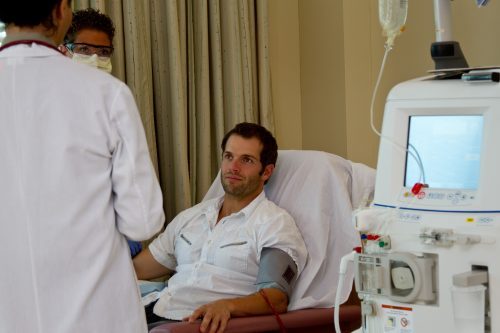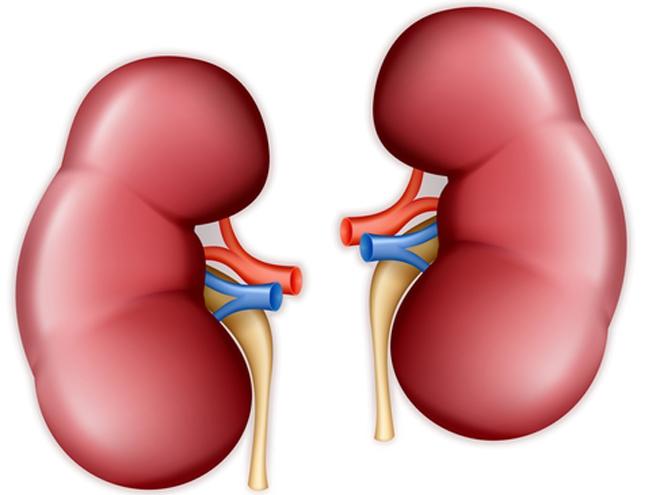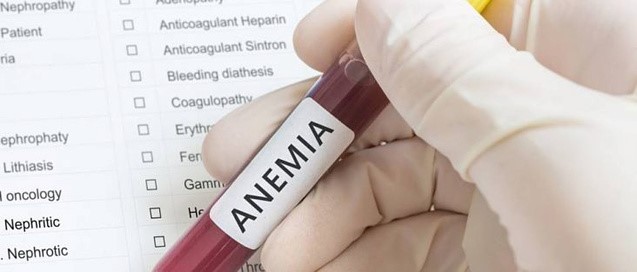
Researchers in Japan conducted study of roxadustat, an orally active hypoxia-inducible factor prolyl hydroxylase inhibitor for the treatment of anemia in chronic kidney disease (CKD). The study was designed to examine the efficacy and long-term safety of roxadustat following conversion from darbepoetin alfa (DA), recombinant human erythropoietin (rHuEPO), or epoetin beta Pegol (EBP) to roxadustat in patients with non-dialysis-dependent CKD (NDD-CKD).
The researchers, led by Tadao Akizawa, MD, PhD, sought to evaluate the noninferiority of roxadustat efficacy against DA. Results of the study were reported during a virtual poster session at ASN Kidney Week 2020 in a poster titled A Phase 3, Multicenter, Randomized, Open-Label, Active Comparator Conversion Study of Roxadustat in Non-Dialysis-Dependent (NDD) Patients with Anemia in CKD.
The study cohort included adult NDD-CKD patients in Japan who were receiving DA, rHuEPO, or EBP for ≥8 weeks prior to prescreening. Patients who had received rHuEPO or DA were randomized to receive roxadustat or DA (comparative group). Patients who had used EBP were allocated to receive roxadustat (referential group).
The primary end point was the change in hemoglobin from baseline at weeks 18 to 24. The efficacy of roxadustat was confirmed if the 95% confidence interval (CI) of average hemoglobin at weeks 18 to 24 was within 10 to 12 g/dL; the noninferiority of roxadustat to DA was confirmed if the lower limit of the 95% CI of the difference between roxadustat and DA was above –0.75 g/dL. The study also examined treatment-emergent adverse events.
A total of 262 patients were randomized to the comparative groups and received one or more doses of roxadustat (n=131) or DA (n=131). Seventy patients were allocated to the referential group and received one or more doses of roxadustat.
The mean (95% CI) of average hemoglobin at weeks 18 to 24 in patients in the roxadustat group was 11.14 g/dL, confirming the efficacy of roxadustat. The difference between roxadustat and DA in the change in average hemoglobin from baseline at weeks 18 to 24 was –0.07 g/dL (95% CI, –0.23 to 0.10), confirming the noninferiority of roxadustat to DA.
The incidence of treatment-emergent adverse events during the 24-week study period was 78.6% in the roxadustat group, 70.2% in the DA group, and 77.1% in the referential group. Treatment-emergent adverse events included nasopharyngitis, CKD, hyperkalemia, and hypertension; rates were comparable between the groups.
In conclusion, the researchers said, “This study confirmed the efficacy of roxadustat after conversion from DA, rHuEPO, or EBP, as well as its noninferiority to DA, in NDD-CKD patients with anemia. The safety profile of roxadustat was consistent with previous reports.”
Read more here: https://www.asn-online.org/education/kidneyweek/2020/program-abstract.aspx?controlId=3444293
Source: Akizawa T, Iwasaki M, Otsuka T, Yamaguchi Y, Reusch M. A phase 3, multicenter, randomized, open-label, active comparator conversion study of roxadustat in non-dialysis-dependent (NDD) patients with anemia in CKD. Abstract of a poster presented at the American Society of Nephrology virtual Kidney Week 2020 (PO0269), October 22, 2020.






 © 2025 Mashup Media, LLC, a Formedics Property. All Rights Reserved.
© 2025 Mashup Media, LLC, a Formedics Property. All Rights Reserved.